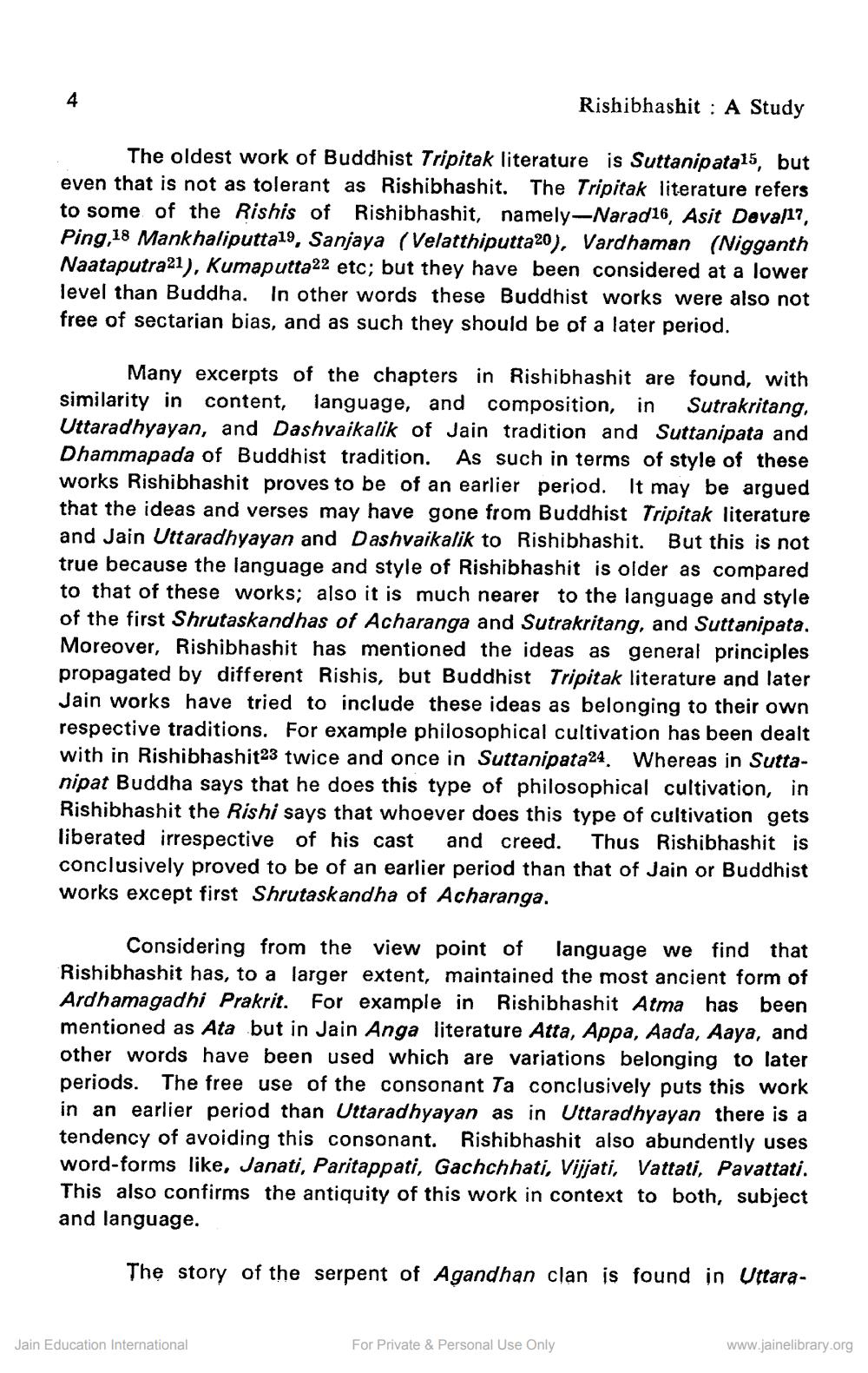________________
Rishibhashit : A Study
The oldest work of Buddhist Tripitak literature is Suttanipatals, but even that is not as tolerant as Rishibhashit. The Tripitak literature refers to some of the Rishis of Rishibhashit, namely-Narad16, Asit Deva 7, Ping, 18 Mankhaliputta19, Sanjaya (Velatthiputta 20), Vardhaman (Nigganth Naataputra21), Kumaputta22 etc; but they have been considered at a lower level than Buddha. In other words these Buddhist works were also not free of sectarian bias, and as such they should be of a later period.
Many excerpts of the chapters in Rishibhashit are found, with similarity in content, language, and composition, in Sutrakritang, Uttaradhyayan, and Dashvaikalik of Jain tradition and Suttanipata and Dhammapada of Buddhist tradition. As such in terms of style of these works Rishibhashit proves to be of an earlier period. It may be argued that the ideas and verses may have gone from Buddhist Tripitak literature and Jain Uttaradhyayan and Dashvaikalik to Rishibhashit. But this is not true because the language and style of Rishibhashit is older as compared to that of these works; also it is much nearer to the language and style of the first Shrutaskandhas of Acharanga and Sutrakritang, and Suttanipata. Moreover, Rishibhashit has mentioned the ideas as general principles propagated by different Rishis, but Buddhist Tripitak literature and later Jain works have tried to include these ideas as belonging to their own respective traditions. For example philosophical cultivation has been dealt with in Rishibhashit23 twice and once in Suttanipata24. Whereas in Suttanipat Buddha says that he does this type of philosophical cultivation, in Rishibhashit the Rishi says that whoever does this type of cultivation gets liberated irrespective of his cast and creed. Thus Rishibhashit is conclusively proved to be of an earlier period than that of Jain or Buc works except first Shrutaskandha of Acharanga.
Considering from the view point of language we find that Rishibhashit has, to a larger extent, maintained the most ancient form of Ardhamagadhi Prakrit. For example in Rishibhashit Atma has been mentioned as Ata but in Jain Anga literature Atta, Appa, Aada, Aaya, and other words have been used which are variations belonging to later periods. The free use of the consonant Ta conclusively puts this work in an earlier period than Uttaradhyayan as in Uttaradhyayan there is a tendency of avoiding this consonant. Rishibhashit also abundently uses word-forms like, Janati, Paritappati, Gachchhati, Vijjati, Vattati, Pavattati. This also confirms the antiquity of this work in context to both, subject and language.
The story of the serpent of Agandhan clan is found in Uttara
Jain Education International
For Private & Personal Use Only
www.jainelibrary.org




